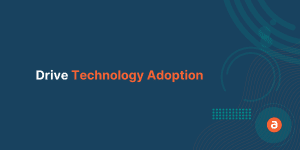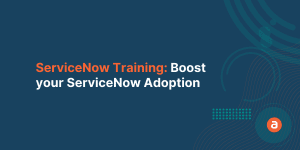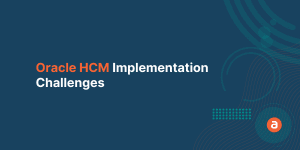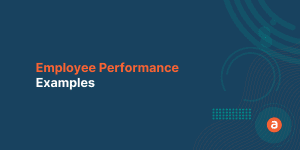Organizational progress never comes easy. It has to start with the employees. An employee development plan will help your employees level up their skills, help them perform better at their tasks, and prepares them for future roles.
What Is an Employee Development Plan?
An Employee Development Plan refers to steps taken by an organization to enhance employees’ skills and knowledge, sharpen their skills, and prepare them to take up new roles in the future.
There is no set script that you must follow to create an employee development plan. The only factors that you must keep in mind when making one are the scope of work and the company culture. Leaders must include reskill and upskill objectives in employee training to help them adjust to sudden changes. This will help serve both company’s and employee’s needs simultaneously.
It may be challenging to create an employee development plan without any experience or knowledge on how to do it but that shouldn’t stop you from doing it. The first step in creating one is simply getting started regardless of how much experience you have with what you are doing.
What is the goal of employee development?
The goal of employee development is to support an employee to work smart and produce high-quality work. Employee development is to help employees improve their performance by offering various training programs to enhance their skills and gain new knowledge. Employee development should be focused on introducing new skills or concepts, rather than reviewing or reinforcing what they already know.
Employee development program
Employee development is a process that needs to be strategically planned. There are seven steps in the employee development pyramid: recruitment, training, coaching/mentoring, growth management planning, succession planning & evaluation of performance against goals.
An employee development program strengthens the overall skills and abilities of your employees so that your company becomes stronger. Its focus is on constant improvement that will drive the company and its employees forward. Career pathing and mentorship programs are two of the more formal ways to work on employee development that can create fantastic results.
Examples of some of the best employee development plans from industry experts.
Here are some real-world examples of employee performance and development action plans and its goals to motivate you to create the best plan for your organization:
According to Martin Luenendonk, Co-Founder at Founderjar,
“A great employee development plan is a classic investment of a win-win situation. As a founder, I believe that this strategy benefits both the company and its employees in a variety of ways. It ensures staff retention and satisfaction, allowing the company to plan for the future. Long-term profitability is raised by investing in employee development plans.“
Employee development plans are a way to improve the way your employees are growing professionally. They help with creating a positive environment for their growth and provide employees opportunities to learn, reflect, and get support.
The employee learning and development plan can assist the company in meeting and even exceeding performance goals. In terms of anticipating emergencies, this plan can better prepare employees to deal with the unexpected. As a result, employees can respond swiftly and efficiently to ever-changing events.
According to Timothy Clarke, Director of Sales at SEOblog,
“I consider skill gap analysis as one of the essential criteria in creating an effective employee plan. Doing skill gap analysis lets me know what areas I need to upscale my employees.“
Employee development plans are a great way to ensure that your employees remain loyal and that you’re retaining them within your organization. It can increase employee retention because it acts as a roadmap to their career progress. Employees can see what steps they need to perform to progress. Plus, employee learning and development plans are also great for filling any skills shortages a business may have.
Start doing a quick skill analysis into how and where an employee can improve in their work. Look at any skills gaps the company may have and train your employees in those areas. Once you have a good understanding of what your organization needs, you can begin putting some training programs in place.
Another great way to do this is by looking at your company’s predicted growth. As your organization and its industry grow, your employees should be able to grow and progress as well.
According to Mary Fox, CEO at Marlow,
“I recommend leaders approach talent development as a conversation where each employee thinks through where they want to be, then they have a conversation with their manager and ultimately start to build out their development plan together from the ground up.“
As leaders, it can be tempting to start building out training tracks that will work for a lot of employees, but every individual has their own set of skills and experience. One employee might need to work on specific technical skills, another might need to spend more time on developing their communication habits. To facilitate this at the enterprise level, you must offer a portfolio of resources that each employee can pull from as needed.
Managers should be creative when making employee development plans and think beyond promotion opportunities and educational courses. Growth is very versatile and can be achieved through several activities. It is also important to consult employees in the process and learn about their desires and aspirations in work.
According to Patti Naiser, CEO of Senior Home Transitions,
“As a CEO, it is my job to ensure my employees have all the necessary skills needed. Biannually, I go over my employees’ skill sets and see if they are up to date for their respective tasks. In this rapidly developing world, new discoveries are found, and new techniques are created at an astonishing pace. It is either keep up or be left behind.“
Employers must analyze employees’ strengths and weaknesses and identify what kind of employee training they need, favoring them and the organization. Training managers must aid their employees in polishing and/or acquiring new skills. Over time, work can become stagnant, and many employees might start to slack off. New and improved ways of completing their tasks must be introduced to keep them attentive. It is imperative for employers to make sure their employees are up to standard.
Employers should motivate their employees through employee development plans that map out both short-term and long-term goals. These plans should also include milestones that help in evaluating how well your employees are doing in achieving their goals within a given time frame.
According to Dean Scaduto, CEO at Dino’s Digital Marketing
“Professional training has benefits and applications in a variety of fields, not just for newcomers. Employee training increases productivity, efficiency, competency, and brilliance. A practical strategy we use for polishing executives and professionals is creating a development plan.“
An employee development plan is the backbone of your employee’s growth and maturity, which means you have to be very attentive to the details and ideas that you will incorporate into it. There’s no easy way you can do it because no matter what employee development strategy you implement, you will always end up creating different scenarios which will need to be addressed.
In creating an employee development plan, instead of focusing on the benefits from such a program, focus on what you can do to incorporate organizational learning and skills development. It should be focused on helping an employee grow and gain more knowledge to make them more competent in the field.
One of the must-haves for an employee development plan is a way to measure results. It is easy to just set out a plan and check items off the list without reflecting and evaluating the outcomes to determine how well the plan works and if anything needs to change. So, as the manager and the employees come up with the development plan, there should be clear metrics with which progress can be measured.
Benefits of Professional Development Plans
A. Increased Retention and Low Turnover
An effective employee training and development program is crucial to keep your employees satisfied and to retain them with the company. Providing employees adequate training gives them the skills they will need in the future to take up more responsibilities.
This is great for the employee as well as the organization since the employee gets promotion opportunities and the organization gets to retain their top talents.
B. Increased Productivity
74% of employees feel they aren’t reaching their full potential at work due to a lack of development opportunities. Higher skilled employees contribute much more to the overall goals of the company.
When employees are given opportunities to grow and build skills, they feel engaged with their work and their productivity increases. Well-trained employees are much more productive than employees that receive poor training since the latter spend a large part of their work day getting resolutions for queries about work.
C. Improved Profitability
Your business’ profits and performance are directly linked to the effort that people put in. Quality training improves your team’s communication, increases customer satisfaction, and boosts profits.
As you upgrade your employees technical and collaborative skills, they directly impact the bottom line of the organization. Your marketing teams get in more leads, sales teams close more deals, and managers lead more efficiently, increasing profits and performance in every aspect of your business.
D. Improved Morale
The pandemic has left employees around the world losing ground and feeling unsupported. Employee morale is at an all-time low since the majority of the global workforce is working remotely.
It is up to the organization to lift employees’ spirits up and help them get back in the groove. One way that employers can do this is by investing in the right employee training program and tools to ensure that their workforce has all the expertise they need to confidently carry out their work.
E. Promotes a Learning Culture
Organizations need an agile working and learning culture now more than ever. Employees need to be able to quickly adapt to new environments, new protocol, and changing market demands. With effective employee training, this is possible.
When you promote a culture of learning at your organization, employees continuously seek, share, and apply new knowledge and skills to improve individual and organizational performance. This type of agile culture permeates all aspects of organizational structure and produces the best business results.
How to Create an Employee Development Plan
To create an employee development plan, follow these 5 steps:
- Perform a skills gap analysis – Analyze the current skill level of the employees and determine what skill level the employee needs to reach to meet the company’s goals. Find the gap.
- Align employee development goals with company goals – The main reason for creating an employee development plan is to improve the bottom line of the organization. Make sure that the employee development goals align with the organization’s goals.
- Leverage the right tools to streamline employee development – Use a digital adoption platform to streamline employee training with the help of on-screen guidance and analytics.
- Track and measure progress – Define Key Performance Indicators (KPIs) of your employee development program for each segment of users.
- Fix friction points and improve the training process – Once you analyze your training program, find where your employees are facing issues, dropping off, etc and remove those roadblocks by improving the process.
Employee development ideas and strategies
Employee development not only improves the skills and abilities of employees, but it helps shape them to become potential leaders within the company. Most companies prefer to promote internally, and employee development is how employees can take the steps up seamlessly.
Employee development is crucial in allowing you to grow your employees’ skill set and career prospects while also making them valuable to your company, thus spurring its growth. The following are some effective employee development plan ideas that you can consider,
- Effective communication is a crucial factor that aids in employee development and is a prerequisite for impressive work performance. Creating and routinely updating a dynamic and all-inclusive communication protocol helps make this possible.
- Growth opportunities can inspire people to work harder. If they don’t feel space for growth in any aspect, they will be less motivated which will impact productivity. Businesses can be very creative about incentives for employees, but these must be taken seriously.
- Provide opportunities for employees to grow, you increase the likelihood that you’ll retain them while also helping them become better at what they do. A good growth program can significantly boost employee morale. They will benefit, and so will your business!
- To develop your employees effectively, start with an audit of the gap between their current skills and what your industry needs to facilitate and sustain rapid growth. Analyzing data from this audit will give pointers on where to start and what path to follow.
Employee Development Solution
Every business is heavily reliant on technology these days, and we’re always on the lookout for the most promising app or tool to make the tasks of our team easier. New technology adoption comes with a cost, but if you choose not to embrace it you will be preventing your business from achieving profitability and growth.
Companies can leverage employee development solutions like Apty to help your employees adapt to the latest tech stack that you bring-in. Apty’s interactive software walkthroughs guides employees to perform their daily tasks easily and effectively, thus allowing them to use the application to the fullest potential. Examine your employees’ progress, evaluate outcomes, and overcome change resistance with the employee development tool like Apty.













